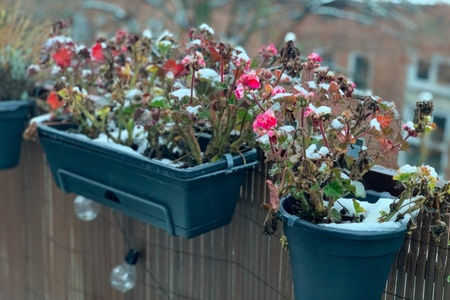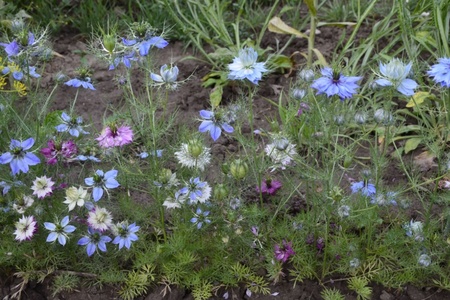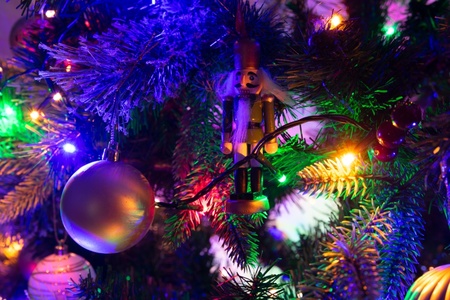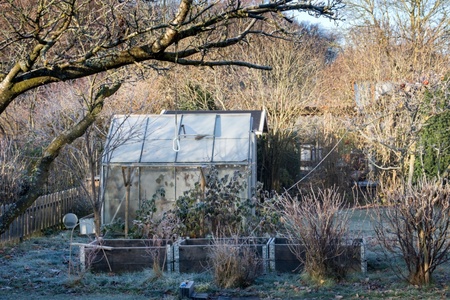Some people still have the tendency to get the garden 'winter-ready.' But this is not necessary at all, and not even a good idea. Fallen leaves in the borders among the perennial plants protect your plants from frost and are converted into fertile soil with the help of worms and small organisms. They help improve your garden soil. Moreover, insects and small animals find shelter and food among fallen leaves in the cold, dark months. That's why it's also better to leave dead flower stems and flower heads on the plants. It looks more attractive in winter than a completely bare garden. Additionally, the faded flower heads, like those of the hydrangea, protect the young buds underneath from frost. In short, wait for the major 'clean-up' until spring. However, we have some autumn pruning tips for you.
What to prune in November?

What you can do in November is prune shrubs, hedges, and trees. This way, they'll go into winter looking neat and tidy, and they'll sprout, grow, and bloom fresh next year. Our garden center in Co. Limerick has all sorts of handy pruning tools in stock and provides you with practical tips on autumn pruning.
Pruning hedges in autumn
Both deciduous and evergreen hedges can be pruned to shape them nicely one more time. This way, they'll go into winter looking nice and tight. For deciduous hedges, wait until they've shed all their leaves before pruning. The hornbeam is an exception to this rule. Use a sharp, clean pair of pruning shears or an (electric) hedge trimmer and trim the hedge back a few centimetres and slightly narrower towards the top, so that even the lower parts receive enough sunlight.
Pruning trees in autumn

The so-called 'ABC' trees are better left alone in autumn and towards the beginning of winter. The maple (Acer), beech, and hornbeam (Carpinus), as well as nut trees like walnut and hazel, can potentially start bleeding. This is when the tree's sap flows out of the tree, weakening it. Only prune these types when they're fully leafed out, as there's no risk of bleeding then. Most other trees can be pruned perfectly well in autumn.
- Apple and pear trees can be pruned from November to March, as long as it's not freezing.
- Pollarded trees, like the willow, and espalier trees, like the espaliered lime tree, can be 'pollarded' and pruned from November to February, as long as it's not freezing or about to freeze.
Pruning berry bushes in November
After the last harvest, you can prune back blackberry, raspberry, black and red currant bushes. Wait until they've shed all their leaves. Prune all the old stems that have borne fruit down to the ground, so that their new shoots have a chance to develop. Also, improve air circulation in the heart of the bush by cutting back the middle shoots and branches.
Pruning roses

- Continue to trim away faded roses, as in mild autumn weather, they can continue to bloom until the first frost.
- Faded rose bushes can be pruned back to knee height (about 50 centimeters above the ground).
- Standard roses are vulnerable to autumn and winter storms, so you can cut back the thin shoots significantly to an eye that sticks outwards. This way, the new shoots will grow outwards in spring. This prevents branches from crossing each other and ensures good air circulation in the heart of the rose.
- The long, thin shoots of climbing roses are also vulnerable to storms and heavy rain. Prune them back to about half, onto the main branch. Also, remove dead branches.
- Ramblers are not usually pruned at this time, but you can still shorten side branches that have bloomed. However, the later you prune, the fewer flowers the plant is likely to carry next year.
Extra pruning tips
- Do not prune when it's freezing.
- Use sharp and clean tools. Dull pruning shears or saws can cause fraying around the pruning wound, increasing the risk of harmful fungal growth.
- First, take a step back and assess which branches need to be removed so that you maintain the structure of the bush or tree.
- Pile up pruned branches and twigs in a sheltered corner of the garden as a hiding place for hedgehogs, frogs, toads, and insects.
Did you know that you don't have to get the garden 'winter-ready' at all? That saves a lot of work! However, you can do some pruning in October and November because 'pruning leads to growth and bloom.' Our garden center in Co. Limerick explains how and what.




